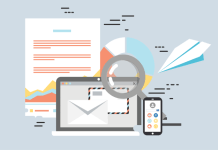
Print marketing is surprisingly affordable, and with the right budgeting and planning, it could be exactly what you need to reach your audience. However, if you want to do this effectively, you’ll need to find a way to reduce costs and improve your reach.
One easily available option is mass printing – the act of printing thousands, or tens of thousands of copies of your marketing materials at once. But how exactly does this work and how can you take full advantage of it?
The Benefits of Mass Printing
Let’s start by looking at some of the benefits of mass printing. What are the advantages of printing hundreds of thousands of marketing materials, rather than just a few hundred?
- Reduced costs. When you print large quantities of a specific item, you’ll benefit from reduced per-item costs. For example, if you order 100 copies of a flyer, you might pay $1.00 per flyer. If you order 10,000 copies of the same flyer, you might pay $0.60 per flyer or less. Usually, this discount scales with the number of materials you’re willing to buy, with ridiculously low prices at the highest volume runs. This is designed as an incentive to encourage people to purchase more, but it’s also related to setup costs relevant to the printer.
- Reliable material availability. If you print many of your marketing materials well in advance, you’ll never have to worry about material availability. If you find out about an upcoming event this weekend, you don’t have to scramble at the last minute to print a new round of materials; you can simply tap into the stores you already have.
- Value optimization. If you know that one of your designs is highly effective with your target audience, and that’s unlikely to change in the future, you can print now to optimize the value you get from it. You can double down on the designs you know are extremely effective and continue reaping the rewards of that effective design for months, if not years to come.
Tips for Using Mass Printing
However, if you want to use mass printing effectively, you need to keep the following tips in mind:
- Choose an evergreen design. Evergreen content is content that has the potential to be relevant indefinitely. If you’re printing a poster that’s advertising a one-time event, mass printing probably isn’t a good idea; once the event is over, any excess materials you have are going to become worthless. Conversely, if you print materials that simply cover the basics of your brand, you may be able to use these for as long as your brand is operational.
- Experiment and test. You don’t want to mass print something unless you’re certain it’s going to be effective. If you print 200,000 copies of a postcard that turns out to be practically incapable of achieving conversions, it doesn’t matter how much money you saved during the printing process – your entire investment will be a loss. Before committing to any mass printing, conduct some tests with different designs to see how those designs resonate with your target audience. Conduct surveys and focus groups to narrow down your list and choose the best possible option for mass printing.
- Choose the right printer. It’s also important to choose the right printer. Good printing companies will thoroughly review their work, making sure everything is aligned properly and applying proper quality control procedures. It’s tempting to choose the cheapest provider, but that’s not always the right move. Quality must come first.
- Get a test batch. Before committing to a major deal with any organization, you need to do your due diligence. Before printing thousands of copies of your latest marketing and advertising materials, get a test batch. See if this printer can handle this type of job and inspect each item for quality.
- Forecast your needs. Think about how many flyers you’re going to need in the future. What type of events are you planning on attending in the future? How many of these materials do you burn through on a weekly basis? How long do you want these materials to last you? A few rudimentary calculations should be all you need to ballpark the number of copies you can feasibly buy in one go.
- Prepare for storage. Buying in bulk does present a few additional challenges. For example, you’ll need to figure out some way to store your excess materials. If you had 100 boxes filled with brochures, would you know where to put them?
- Stay consistent with distribution. Try to distribute your materials on a regular basis. These printed copies aren’t going to provide any value to your business if they stay shut inside their original boxes. Commit to a consistent distribution pattern so you can gradually and steadily tap into your supply. This will also help you effectively predict when it’s time to reorder.
Mass printing isn’t the right move for every marketing and advertising strategy, nor is it the right move for every business. If you’re not sure how you want to position your business in advertising, or if you’re working with an extremely limited budget, this may not be the option for you. However, for businesses that can benefit from it, mass printing is an excellent movie that can save you money and increase your effectiveness.










